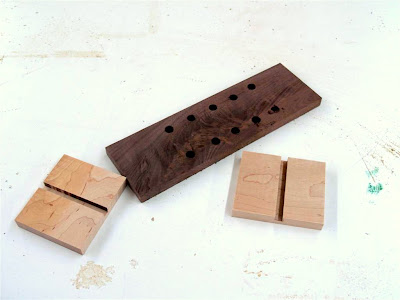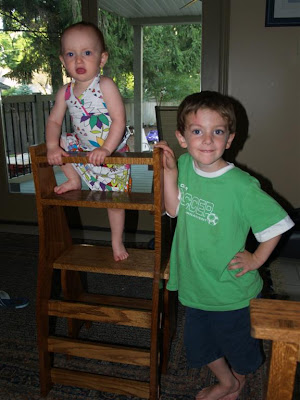On the last deck I built I used a hidden deck fastener to attach the deck boards and was very happy with the results. It definitely took more time to do the install, but I feel that the end result was worth the extra time.
For this deck I picked up the same product that I'd used previously - it's from
Peak Products and is available at my local Home Depot. The Peak website says that it is only available in Canada, but it seems to be the similar to a product called '
Deckmaster' [
amazon link
]from Grabber. At about $3 each they were not outside my budget for this deck.
The rails come in 45" lengths and cut easily to size with tin snips.

Installation is a piece of cake. Lay them on top of the joists and put a 1 1/2" galvanized nail into every other hole.

The
installation instructions say to alternate joist sides for adjacent rails. If you have any joists where the deck boards will meet end to end, then install a rail on each side of the joist.

As you can see from the pictures I've pre-stained my deck boards. It's a pain to do but I like that all four sides get stained. I'll add another coat on top after the install is complete.
After the rails are in, it probably takes about twice as long as hand screwing a deck from the top and maybe four times longer than if you are using a drill with an auto screw feeder. Again, I feel it's worth it for to have no screws on top of the deck. I'm hoping this deck will be around for at least 10-15 years, so a bit of extra time spent on the install will be worth it to me.
Once the rails are in, it's time to install the deck boards. I think the display at Home Depot has a picture of a guy installing the under deck screws by kneeling on an already installed board and leaning over to install the screw like this :

In reality, your only chance to get the screw in the hole is to crouch over like this :

It's not really practical and pretty slow. You could also try coming at it from the uninstalled portion of the deck - like this :

Again I find this difficult to get the screw in the hole and keep pressure on the impact driver to get it into the deck board.
The best way that I found to install the decking boards was to clamp the board in place, then slide under the deck (on a piece of cardboard) and drive the screws up from underneath. Even with a bare minimum of clearance I was able to squeeze under and get the job done. Not fun, but it's doable.

The holes on the rails are space about 1" apart and the installation instructions say to install two screws per joist. Depending on where your deck boards end up, you can usually put in three or four to hold down a particularly warped joist.
I like this product and will likely use it again if I move and have to build a new deck :)











































